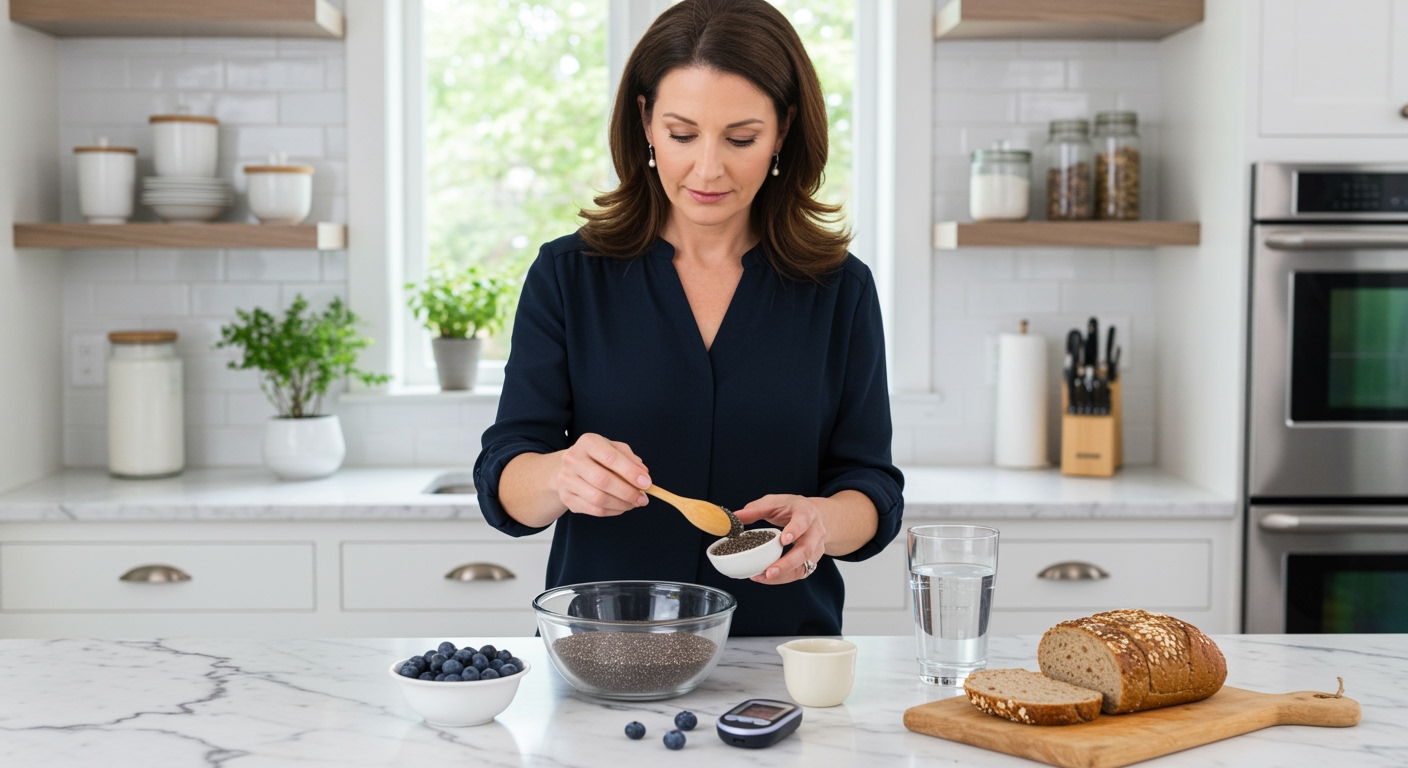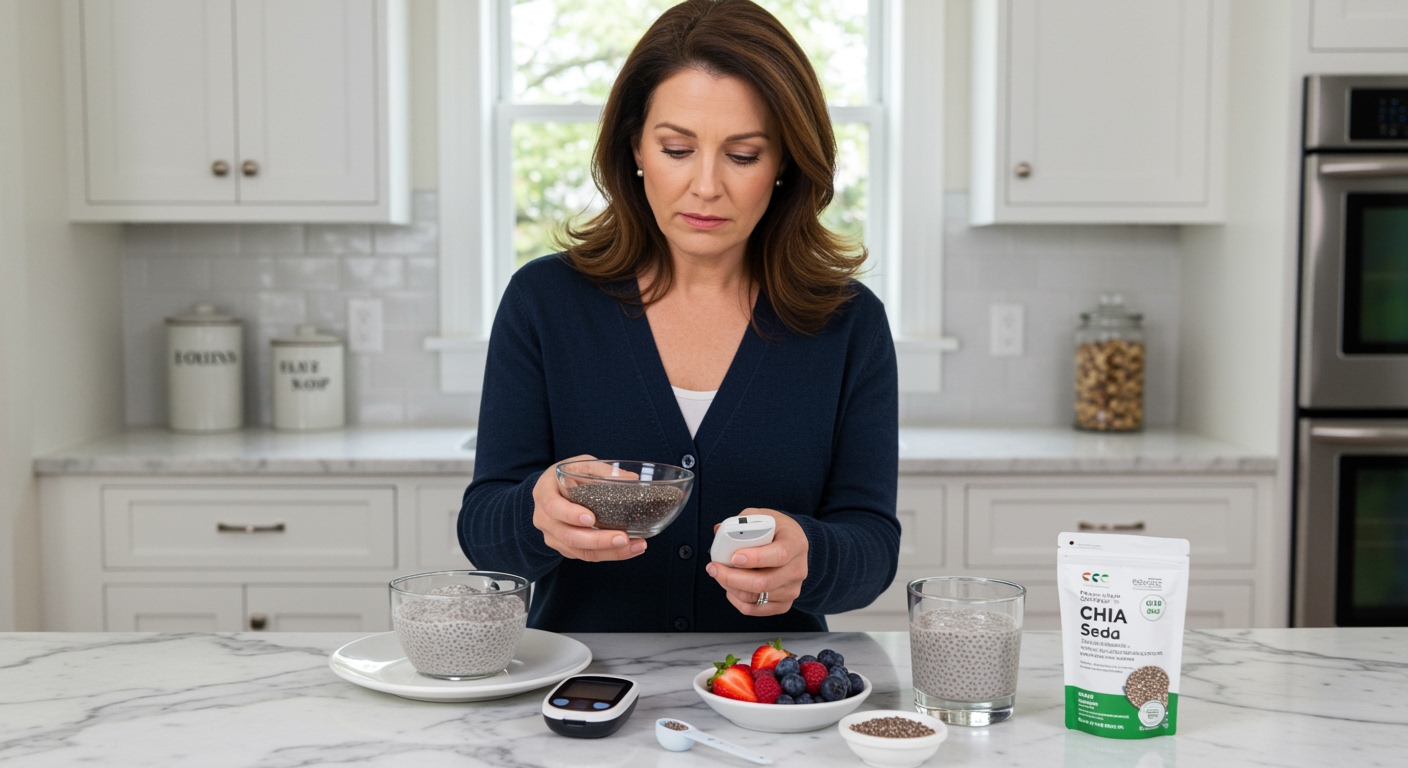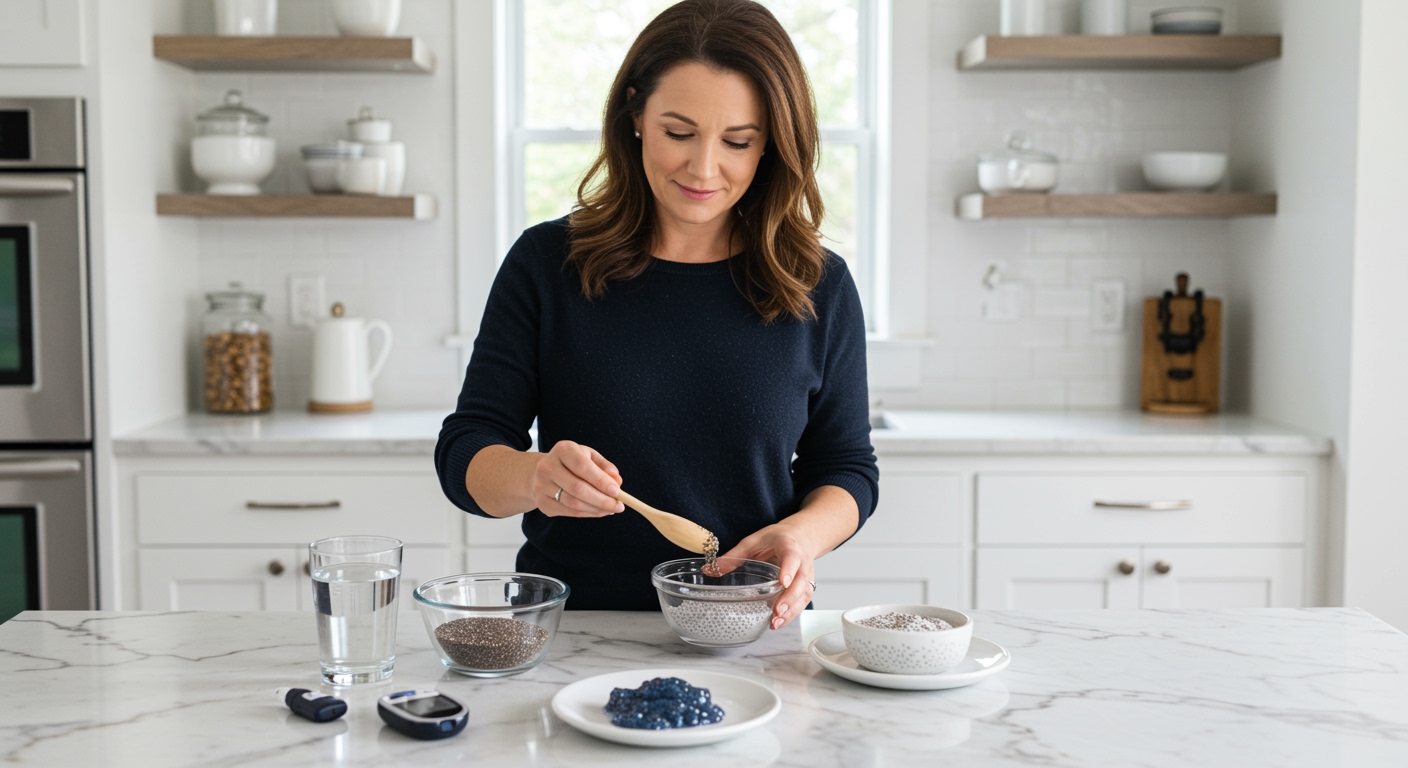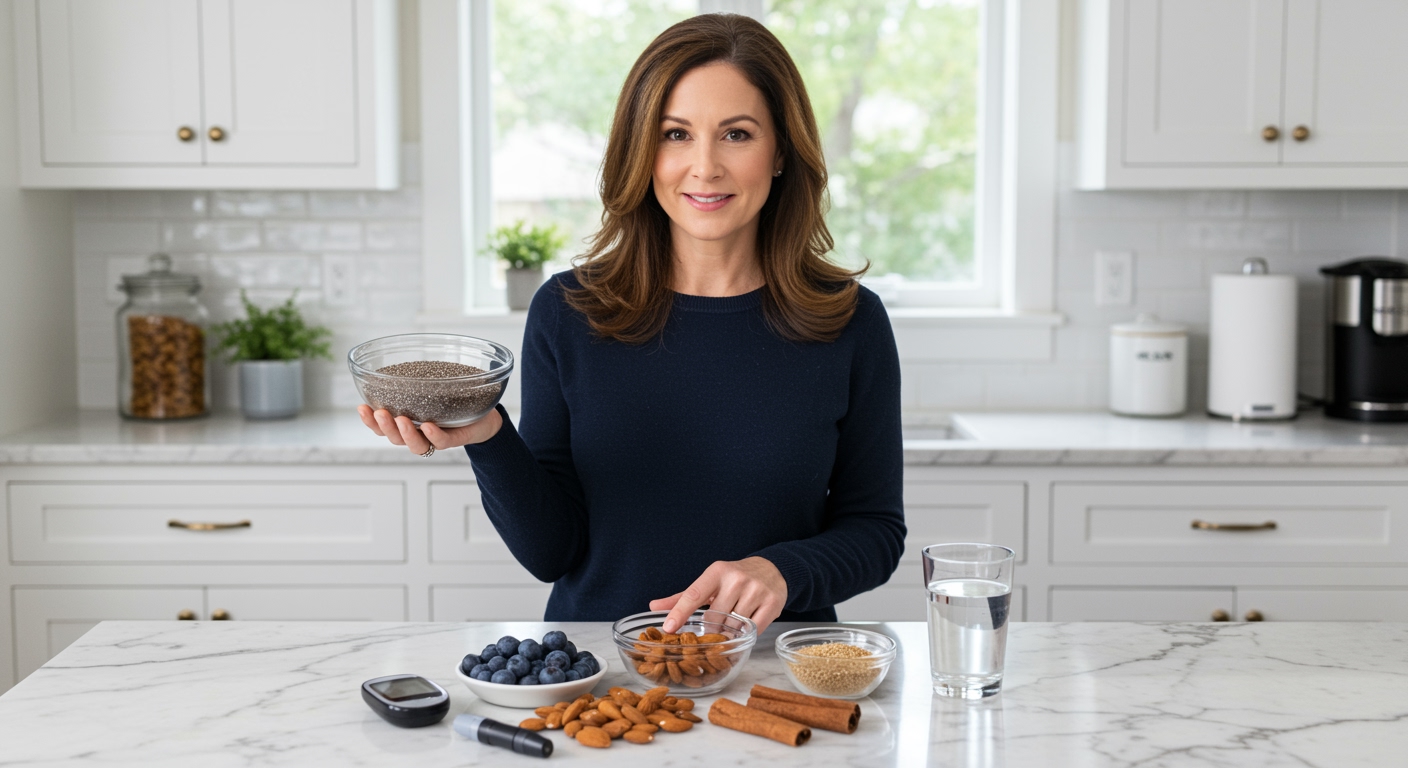✪ Key Takeaway: Chia seeds can help manage diabetes when consumed in proper portions due to their fiber and protein content.
Introduction
Your doctor just told you that you have diabetes and now every food choice feels like walking through a minefield.
You probably heard that chia seeds are some kind of superfood that can magically fix your blood sugar problems.
Hi, I am Abdur, your nutrition coach and today I am going to explain exactly how chia seeds affect your blood sugar and whether they deserve a place in your diabetes management plan.
How Do Chia Seeds Affect Blood Sugar Levels?
Chia seeds contain about 10 grams of fiber per ounce, which is roughly one-third of your daily fiber needs.
This high fiber content creates a gel-like substance in your stomach when mixed with water.
The gel formation slows down the digestion process and prevents rapid spikes in blood glucose levels.
Research shows that people with diabetes who consumed chia seeds experienced a significant reduction in post-meal blood sugar spikes compared to those who did not.
The soluble fiber in chia seeds also helps improve insulin sensitivity over time.
However, the timing and portion size matter more than most people realize.
✪ Pro Tip: Soak chia seeds for at least 15 minutes before eating to maximize their blood sugar benefits.
What Makes Chia Seeds Different From Other Seeds?
Most seeds contain healthy fats and some protein, but chia seeds have a unique fiber profile that sets them apart.
Unlike flax seeds or sunflower seeds, chia seeds can absorb up to 12 times their weight in water.
This absorption capacity creates a viscous gel that coats your intestinal walls and slows nutrient absorption.
The slower absorption means your pancreas does not have to work as hard to produce insulin bursts.
Chia seeds also contain about 4 grams of protein per ounce, which further helps stabilize blood sugar levels.
The combination of fiber, protein, and healthy omega-3 fats makes chia seeds particularly effective for diabetes management.
✪ Fact: Chia seeds contain more fiber per gram than most vegetables and fruits combined.
Can You Eat Too Many Chia Seeds With Diabetes?
The answer is absolutely yes, and this is where most people make their biggest mistake.
One ounce of chia seeds contains about 138 calories and 9 grams of fat.
While these are healthy fats, consuming too many calories can lead to weight gain, which worsens insulin resistance.
More importantly, eating large amounts of chia seeds can cause digestive issues like bloating, gas, and stomach cramps.
These digestive problems can actually stress your body and potentially raise blood sugar levels.
The recommended serving size is one tablespoon (about 15 grams) per day for people with diabetes.
Starting with smaller amounts allows your digestive system to adapt to the increased fiber intake gradually.
✪ Note: Always drink plenty of water when consuming chia seeds to prevent digestive discomfort.
When Should You Eat Chia Seeds For Best Results?
Timing your chia seed consumption can make a significant difference in their effectiveness for blood sugar control.
The best time to eat chia seeds is 30 minutes before your largest meal of the day.
This timing allows the seeds to form their gel-like coating in your stomach before food arrives.
The pre-formed gel creates a barrier effect that slows down the absorption of carbohydrates from your meal.
Many people also find success adding chia seeds to their morning smoothie or overnight oats.
The key is consistency – eating chia seeds at the same time each day helps your body develop a predictable blood sugar response.
✪ Pro Tip: Mix chia seeds with Greek yogurt for a protein-fiber combination that maximizes blood sugar stability.
Do Chia Seeds Work For All Types Of Diabetes?
The benefits of chia seeds apply to both Type 1 and Type 2 diabetes, but the mechanisms work differently.
For people with Type 2 diabetes, chia seeds help improve insulin sensitivity and reduce the amount of insulin needed after meals.
The fiber content helps slow glucose absorption, giving your pancreas more time to produce adequate insulin responses.
For people with Type 1 diabetes, chia seeds can help create more predictable blood sugar patterns, making insulin dosing easier.
However, people with Type 1 diabetes should monitor their blood sugar more closely when first adding chia seeds to their meal plan.
The slower carbohydrate absorption might require adjustments to insulin timing or dosage.
Always work with your healthcare provider when making significant changes to your diabetes management routine.
✪ Note: People taking blood-thinning medications should consult their doctor before adding chia seeds regularly.
The Bottom Line
Chia seeds can be a valuable addition to your diabetes management plan when used correctly and in appropriate portions.
The best nutrition strategy is not about finding miracle foods, but about building sustainable habits that work with your body, not against it.
I would love to hear about your experience with chia seeds or any questions you might have about incorporating them into your diabetes meal plan – please share your thoughts in the comments below.
References
At NutritionCrown, we use quality and credible sources to ensure our content is accurate and trustworthy. Below are the sources referenced in creating this article:
- PubMed: Chia Seeds and Diabetes Research
- University of Toronto: Chia Seeds Promote Weight Loss in People with Diabetes
- PubMed: Effects of Chia Seeds on Metabolic Health
- PHLabs: Be Proactive About Diabetes with Chia Seeds





